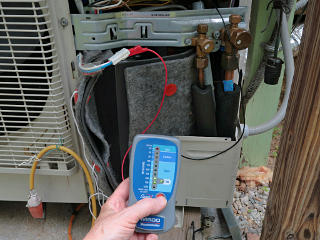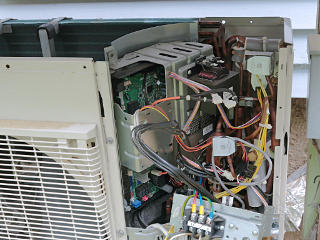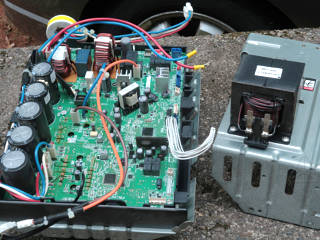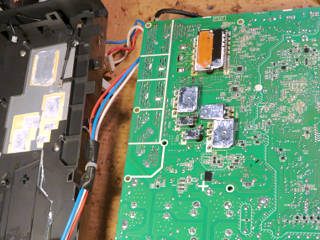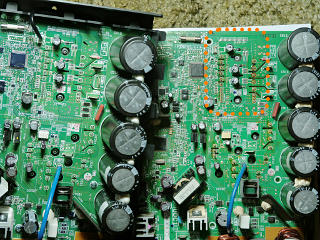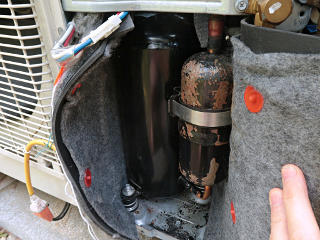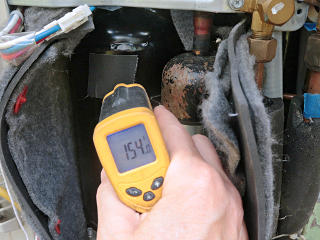| |
After going through the whole hairball of becoming EPA 608 certified and
finally being able to
top up my own system,
a couple of months after that it was time to go back into cooling season.
I still wasn't sure if the leak was still leaking or what I'd find when firing
the system up again, but a quick look at the pressure-equivalent figures
said it still had saturation pressure inside and of course I knew exactly
what to do if it wouldn't run right.
But now it was actually throwing an error, a new one I hadn't seen -- L1.
"Malfunction of outdoor unit PCB".
(service manual pic)
This was trying to tell me that some power module or a current sensor
associated with it had gone tango uniform, something not associated with
a leak at all.
*Argh.* Now the fuck what?!
And what would it be next?
Were things getting so generally wretched with this system that it was time
to consider just replacing the whole thing?
I wasn't ready for that, and at a minimum wanted to make sure I wasn't
looking at a compressor replacement or something like that.
I did a bit of testing, trying to run the compressor in "inverter test"
mode where it basically cycles the drive waveform very slowly, enough to
see on an LED blinkie-box, and I could feel the compressor *wiggling* a
little but not actually running.
So one of the 3-phase legs wasn't getting any current.
Scoping the inverter waveforms was rather inconclusive, just because the
output is so noisy and it's hard to find a good ground reference.
Simple ohm checks told me that nothing was obviously open or shorted.
But still the system insisted that the "A1P" board, which is Daikin's common
term for main boards in general, was simply bum.
In this case, it's the "everything" board with all the power supply and
filtering and control logic and inverter all together, and sits buried fairly
far back in the unit with all kinds of harnesses and connectors going to it.
I searched up a handful of technician experiences diagnosing these, notably
this post
and some Youtubes from guys replacing them in commercial units.
Basically, everything pointed to "just replace the board".
As usual, Daikin's own service people gave me all kinds of crap about being
a "licensed contractor", and "what company are you with", and you *have* to
basically lie to them to get any support bandwidth from them at all.
They need to learn that some "homeowners" can be as, if not more, clueful
than the people working on this stuff every day.
Especially homeowners who get trade certifications just to make their own
lives easier.
And now I could confidently tell them that *I* was the tech working on
this system including with the refrigerants when needed, which likely
carries a little more weight.
The people in the HVACR industry *have* to stop trying to be so damn secretive
about the trade, it's not like some elite wizards' guild, and you can learn
all this stuff off Youtube and elsewhere anyway.
Daikin's website is also a horror show, and only by jumping through a lot of
permission-granting hoops was I able to look up my unit and determine its
warranty status.
At nine years old it was definitely out of warranty, so no hope of free
replacement parts.
It turned out the same supply house where I took my 608 test could order me
a new inverter board from Daikin, given the exact outdoor unit model number,
and at a substantially lower price than list.
The more reasonable support guy I finally talked to at Daikin also suggested
checking the compressor windings anyway, to make sure that wasn't behind any
possible overcurrent situation.
So, back to Amazon to order more tools: this time it was a megger, and in
that same order I also picked up the Schrader core tool eventually used near
the end of the leak-chasing page.
|
